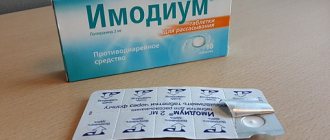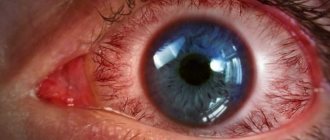Write a review
Reviews: 0
Manufacturers: Ozone (Russia)
Active ingredients
- Pyridoxine
Disease class
- Iron-deficiency anemia
- Secondary parkinsonism
- Other extrapyramidal and movement disorders
- Stomach ulcer
- Duodenal ulcer
- Chronic hepatitis, not elsewhere classified
- Atopic dermatitis
- Dermatitis, unspecified
- Psoriasis
- Preeclampsia (nephropathy), unspecified
- Pyridoxine deficiency
Clinical and pharmacological group
- Not indicated. See instructions
Pharmacological action
- Replenishes vitamin B 6 deficiency
Pharmacological group
- Vitamins and vitamin-like products
Active substance
Pyridoxine hydrochloride is a water-soluble crystalline compound.
The chemical formula is C₈H₁₁NO₃. According to the IUPAC international system for naming chemical compounds, the substance is called 4,5-dihydroxymethyl-2-methylpyridin-3-ol, 4,5-dihydroxymethyl-2-methylazin-3-ol. Vitamin B6 attaches to protein molecules as an activating center for the processing of amino acids. Has properties as a regulator and stimulant:
- metabolic processes;
- protein absorption;
- synthesis of red blood cells and hemoglobin;
- uniform distribution of glucose throughout the cells.
Release form
Pyridoxine hydrochloride is available in tablets and solutions for injection. There are single and combined drugs. In complex products, it is most often produced together with magnesium or other B vitamins. The quantity and dosage are different, depending on the manufacturer. Tablets are available in dosages of 2, 5, 10 milligrams. Ampoules of one milliliter, each containing 50 mg. Production is established all over the world:
Solgar, Vitamin B6, 25 mg, 100 Tablets
458 ₽
Buy at a discount
- Magne B6 tablets and solution from Sanofi + Winthrop Industry, France.
- Magnesium tablets from Biotter, Poland.
- Dietary supplements from Solgar, USA – vitamin B6 and combined with magnesium.
- Solutions and tablets Ozone LLC, Russia.
- JSC BZMP, Belarus.
- Pharmstandard-UfaVITA, Russia, combilepen in ampoules and tablets - a combination of pyridoxine, vitamin B1 and B12.
- Doppelhertz magnesium B6, Doppelhertz active magnesium plus B vitamins from Queisser Pharma, Germany.
This is not a complete list of global manufacturers producing pyridoxine hydrochloride. But further we will consider mono-drugs with one active component.
Principle of action on the body
After entering the body, pyridoxine hydrochloride is absorbed in the gastrointestinal tract at the level of the small intestine. Then it enters the liver, where it is converted into pyridoxaminophosphate and pyridoxal phosphate. The latter has the ability to bind to proteins in the plasma. Then penetration occurs into all tissues, the highest concentration is in the liver, the level is lower in the muscles and nervous system. The half-life is approximately twenty days. Excreted through the urinary system.
During exposure to the body it performs the following functions:
- immune system support;
- protection against spikes in blood sugar;
- regulation of cholesterol levels;
- participation in metabolism, enzyme synthesis;
- stabilization of the amount of sex hormones;
- reducing the formation of oxalate stones in the kidneys, increasing diuresis;
- supporting stable functioning of the stomach, thyroid gland, adrenal glands;
- participation in the formation of red blood cells;
- stimulation of antibody production.
Pyridoxine hydrochloride in ampoules - instructions for use
Administration of vitamin B6 by injection is prescribed when oral administration is impossible or the deficiency of this vitamin is so significant that its urgent replenishment is required. Pyridoxine hydrochloride is sold in 1 ml ampoules, in which 50 mg of pyridoxine is dissolved. Externally, the liquid is colorless or has a slight yellowish tint. If the ampoules contain cloudiness or other abnormal visual effects, then this drug should not be used due to health risks.
The injection uses a synthetic analogue of vitamin B6, which is found in small quantities in many foods. But its deficiency is often recorded, so people need to be replenished, because it is one of the main vitamins that affects metabolic processes in the body. Affects the functioning of the central nervous system and PNS, due to its participation in the creation of neurotransmitters. It is also needed in the formation of proteins, enzymes, hemoglobin and many amino acids synthesized in the human body.
According to the instructions for use of pyridoxine hydrochloride, it interacts with the liver, where it produces two metabolites - pyridoxal phosphate and pyridoxaminophosphate. The latter binds to blood proteins almost completely (about 90%) and has a high degree of penetration into all cells of the body. Most of the vitamin accumulates in liver cells, and the remaining amount is stored in muscles and the central nervous system.
The half-life of pyridoxine and its metabolites is approximately 15-20 days from the moment of administration. In this case, 98% of excretion occurs in the kidneys, and 2% in the intestines, into which the compounds enter along with bile. Excess needs of the body are immediately eliminated without accumulating in the body. Therefore, before you start taking medications, you need to know for sure that there are no problems with the kidneys or liver.
Injections are also not recommended for those with coronary heart disease or erosion of the stomach walls. The drug can cause an increase in the acidity of gastric juice, therefore, with an ulcer, gastritis or increased acidity, pyridoxine should be taken only as prescribed by a doctor.
Dosage
Injections are most often administered intramuscularly, sometimes intravenously. In rare cases, subcutaneous injection is possible. Doses for different diseases differ:
- Hypovitaminosis - 1 ml is administered at a time, the maximum dose per day is 2 ml (morning and evening). Duration of therapy is 21-28 days.
- Parkinson's disease - intramuscularly 2 ml, at a time. The course is 20-25 injections. After 60-90 days, you need to repeat the course of injections.
- When using medications containing substances from the isoniazid group, 0.1-0.2 ml is used for prevention throughout the entire treatment.
- In case of an overdose of isoniazides, the drug is administered in the form of injections or droppers, with a ratio of 1 to 1, so for every gram of isoniazides taken, you need to administer 20 ml of pyridoxine hydrochloride. The injection rate is 10 ml/minute.
- Anemia caused by a lack of pyridoxine - 1-4 ml per day is administered for 30-60 days. The size of the injections and the duration of treatment are prescribed by the doctor, who monitors the body's response to the medicine. If there is no dynamics, then the drug is discontinued earlier and the patient moves on to another type of treatment.
- Pyridoxine-dependent syndrome – 1-10 ml, injection rate – 1 ml/minute. The course of treatment is 21-28 days.
- For other diseases, the same volume is prescribed as for hypovitaminosis.
For children and pregnant women, doses are different:
- For toxicosis - 1 ml per day, course of treatment is 10-20 days.
- For pyridoxine-dependent convulsions in children, 1-2 ml are administered at a rate of 1 ml/minute.
- In case of isoniazid overdose in children, treatment is the same as for adults. If the amount of the toxic substance is unknown, then the child’s body weight is taken into account. For each kilogram of which you need to administer 70 mg of pyridoxine (1.4 ml). The maximum possible quantity is 100 ml.
From the moment of production, ampoules can be used for 3 years if their storage conditions correspond to the recommended ones. The drug should be kept in a dark place with an ambient temperature not exceeding 25 degrees.
Carefully! Instructions for use of pyridoxine hydrochloride do not recommend mixing with other medications or vitamins. It reacts negatively to vitamins B1, B12, C, as well as iron salts and alkaline solutions. It can react with most medications, so you need to use a separate syringe or drip system to administer it.
Indications
The instructions for use of pyridoxine hydrochloride indicate conditions in which it is necessary to additionally take vitamin B 6:
- vitamin B6 deficiency;
- malabsorption syndrome - impaired digestion and absorption in the small intestine;
- anemia – iron deficiency, hypochromic, microcytic;
- pathologies of the skin – dermatitis, psoriasis, diathesis, herpes;
- liver damage – hepatitis, cirrhosis, chronic poisoning with alcohol-containing drugs;
- Meniere's syndrome is a disease in which the determination of the position of one's body in space is impaired due to an increase in the amount of fluid in the inner ear;
- weakened immunity due to infectious diseases, in the postoperative period, after serious illnesses;
- neuritis, neuralgia;
- to improve urinary function, enhance the effect of diuretics;
- Little's disease is a form of cerebral palsy in children that affects the lower extremities;
- taking hormonal contraceptives;
- smoking;
- psychoemotional disorders in pregnant women, severe toxicosis;
- coronary atherosclerosis;
- taking anti-tuberculosis drugs;
- congenital convulsive syndrome in children associated with a lack of pyridoxine.
Pyridoxine hydrochloride tablets - instructions for use
Pyridoxine hydrochloride is available in the form of tablets of 30 pieces in a blister. The package contains 1 or 2 blisters. The main active ingredient pyridoxine hydrochloride is a synthetically produced vitamin B6. One tablet contains 0.05 g of vitamin, the rest is excipients:
- microcrystalline cellulose (10 mg);
- glucose (77.5 mg);
- colloidal silicon dioxide (0.5 mg);
- talc (1 mg);
- calcium stearate (1 mg).
Their main purpose is to increase the volume of the tablet to the accepted size. They also allow a minimal amount of pyridoxine to reach the gastric mucosa and begin absorption in the intestine.
Indications
The medicine is used:
- With B6 deficiency, anemia caused by its deficiency or seizures.
- In case of metabolic disorders, in particular, impaired intestinal absorption of pyridoxine from food.
- Part of complex therapy for PMS, muscle problems, skin or mucous diseases, depression.
- During pregnancy to mitigate the manifestations of toxicosis, as well as in acute poisoning with isoniazid.
Pyridoxine hydrochloride penetrates the placenta, so taking the drug during pregnancy should be under the supervision of a doctor. The vitamin also saturates breast milk and may cause decreased lactation. Therefore, it is also taken only as directed and under supervision of the health of the mother and child.
Vitamin B6 is involved in protein synthesis, amino acid metabolism and affects the activity of about 60 enzymes. Affects the breakdown of tryptophan, from which serotonin and nicotinic acid are synthesized. It also affects muscle function, the creation of immune and blood cells, which is especially important during the growth process that occurs in childhood and adolescence.
Directions for use and doses
- For vitamin deficiency, 1 tablet is prescribed 1-2 times a day for 30-60 days.
- For isoniazid poisoning and anemia - 1 tablet per day. The duration of treatment is prescribed by the doctor, but for anemic syndrome, the medicine is most often taken for 30-90 days.
- For diseases of the skin or mucous membranes, as well as burns (including sunburn), take 3-4 tablets at a time. In case of severe damage, 1 tablet is prescribed at intervals of 1 hour.
- For nausea in pregnant women or radiation sickness, 1-2 tablets per day are prescribed. The treatment period for toxicosis is 10-20 days.
- In case of impaired absorption of vitamins due to cystinuria - 1-2 tablets three times a day. The duration of administration is prescribed by the doctor, the maximum possible dose is 6 tablets (0.3 g of pyridoxine hydrochloride).
Note! The drug should not be taken longer than prescribed, especially if the prescribed doses were quite large. Excess B6 can impair the functioning of the peripheral nervous system or cause allergic reactions.
The medicine causes an increase in the acidity of gastric juice, therefore, in the presence of peptic ulcer or erosive disease of the gastrointestinal tract, it is not prescribed. Before taking, consult a doctor for people with cardiac dysfunction (due to the effect of the drug on the hematopoietic system).
The pharmacokinetics of pyridoxine begins in the gastrointestinal tract, where it is absorbed into the intestinal mucosa and is predominantly converted to pyridoxal phosphate. The substance accumulates in the liver tissues and also circulates in the blood, entering all tissues of the body. The half-life of pyridoxal phosphate is 15-20 days from the moment of administration. It is excreted through the kidneys, mainly in the form of metabolites. Part of the substance is excreted in the feces, entering the digestive tract along with bile.
When the daily requirement is exceeded, pyridoxine is absorbed into the gastric mucosa, but does not change. B6 is excreted in the urine in the near future.
The shelf life of the tablets is 36 months at temperatures from +15 to +25 degrees. Blisters should be kept in a dark place that is inaccessible to children.
Pyridoxine hydrochloride - instructions for use - tablets for children
The instructions for use of pyridoxine hydrochloride do not recommend giving the drug to children under 36 months. After this period, only a doctor can prescribe the drug, who will be absolutely sure that the benefits of taking it outweigh the risk of side effects. To avoid an overdose, you need to follow the instructions:
- Children from 3 to 6 years old are prescribed the maximum possible dosage - 1 tablet per day.
- Children over 6 years old are prescribed 1-2 tablets per day.
The medicine is used for children for the following diseases:
- Prevention of hypovitaminosis - 2 mg per day. The course of therapy is 2 months.
- For pyridoxine-dependent convulsive syndrome - 10-100 mg every day. The course of treatment is determined individually by the doctor.
- Poisoning with drugs of the isoniazid group - for each gram of the drug that caused the overdose, 20 ml of Pyridoxine is prescribed. The maximum dose is 100 ml.
Most often, tablets are prescribed for 14-28 days. During this time, most diseases are stopped, so the recommended periods cannot be exceeded. If the body’s reactions are weak and the illness does not go away after a course of treatment, then you need to consult a doctor to adjust and replace the medication with other medications.
Contraindications
The instructions for use of pyridoxine hydrochloride indicate cases in which the drug should be taken carefully, under medical supervision:
- severe degree of pathological conditions of the liver;
- cardiac ischemia;
- ulcerative lesions of the gastrointestinal tract;
- bearing a child;
- breast-feeding;
- childhood.
An absolute contraindication is an allergy to pyridoxine hydrochloride..
Drug interactions
- Strengthens the effect of diuretics, weakens the activity of levodopa.
- Isonicotine hydrazide, penicillamine, cycloserine and estrogen-containing oral contraceptives weaken the effect of pyridoxine.
- Combined with cardiac glycosides (pyridoxine helps increase the synthesis of contractile proteins in the myocardium), with glutamic acid, as well as potassium and magnesium aspartate (asparkam).
- Pyridoxine prevents or reduces toxic manifestations, including liver damage, observed with the use of isoniazid and other anti-tuberculosis drugs.
special instructions
In case of severe liver dysfunction, it is not recommended to use high dosages of the drug due to the high probability of deterioration of the gland. Patients suffering from diabetes should take into account that the tablet form contains glucose. Distortions are possible when testing urine for the content of urobilinogen, a bile pigment, using Ehrlich's reagent.
When used for injection, it must be taken into account that the drug cannot be used in the same syringe with other medicinal substances. A negative reaction occurs when used together with thiamine, cyanocobalamin, ascorbic acid, and alkaline solutions.
Side effects
Pyridoxine hydrochloride, like any other medicinal substance, can cause side effects:
- pain in the stomach;
- an increase in the level of stomach acidity;
- decreased amount of milk produced during breastfeeding;
- the appearance of a feeling of constriction in the upper and lower extremities, which is called the symptom of stockings and gloves;
- reaction to high speed intravenous administration in the form of convulsions.
Allergic reactions of varying severity may occur:
- mild form in the form of allergic rhinitis, conjunctivitis, diathesis, urticaria;
- moderate degree in the form of Quincke's edema;
- severe reaction in the form of anaphylactic shock.
Reviews
If you have experience using vitamin B6, share your experience and leave reviews:
| Leave feedback | |
| 1 2 3 4 5 | |
| Send Cancel | |
Send your review
Pyridoxine hydrochloride
Average rating: Number of reviews: 0
Reviews of drugs with pyridoxine hydrochloride are numerous and varied. Patients are satisfied with the low price of the drug and the ability to purchase tablets without a doctor’s prescription. They note high effectiveness after therapeutic measures, improvement in the condition of the skin, increased hair growth, and reduced nail fragility.
The disadvantages include the pain of intramuscular and subcutaneous injections, the inconvenience of dividing tablets due to their small size, and the occurrence of allergies.
Analogs
There are similar vitamins or vitamin-like drugs that are similar in pharmacological group:
- Medobiotin. Ingredients: pyridoxine hydrochloride, calcium pantothenate, nicotinamide, alpha-tocopherol acetate, riboflavin biotin. Medicines are prescribed for psycho-emotional disorders, disorders of the digestive tract, diseases of the skin, nails, and hair.
- Magwit. Ingredients: pyridoxine hydrochloride, magnesium citrate. Indicated for damage to the nervous system, muscle cramps, intestinal spasms and other manifestations of vitamin B6 deficiency.
- Magnelis. Ingredients: pyridoxine hydrochloride and magnesium lactate. Prescribed for convulsions, stress, effective for psoriasis, necessary for normalizing intestinal motility.
Structural analogues that contain the active substance pyridoxine are the drugs Pyridoxine Bufus and Pyridoxine Vial, Benfotiamine.









